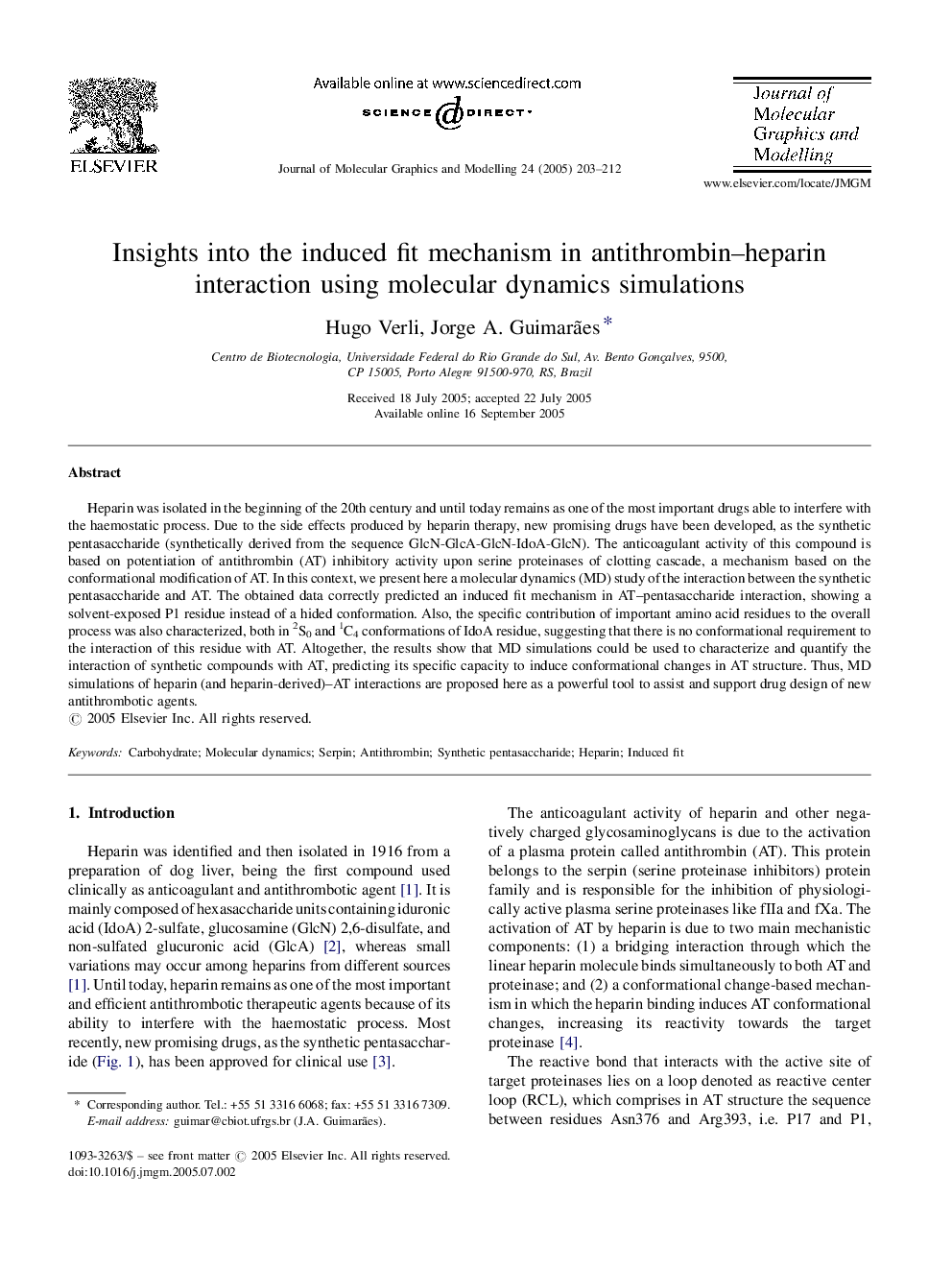| کد مقاله | کد نشریه | سال انتشار | مقاله انگلیسی | نسخه تمام متن |
|---|---|---|---|---|
| 10337204 | 692747 | 2005 | 10 صفحه PDF | دانلود رایگان |
عنوان انگلیسی مقاله ISI
Insights into the induced fit mechanism in antithrombin-heparin interaction using molecular dynamics simulations
دانلود مقاله + سفارش ترجمه
دانلود مقاله ISI انگلیسی
رایگان برای ایرانیان
کلمات کلیدی
موضوعات مرتبط
مهندسی و علوم پایه
شیمی
شیمی تئوریک و عملی
پیش نمایش صفحه اول مقاله

چکیده انگلیسی
Heparin was isolated in the beginning of the 20th century and until today remains as one of the most important drugs able to interfere with the haemostatic process. Due to the side effects produced by heparin therapy, new promising drugs have been developed, as the synthetic pentasaccharide (synthetically derived from the sequence GlcN-GlcA-GlcN-IdoA-GlcN). The anticoagulant activity of this compound is based on potentiation of antithrombin (AT) inhibitory activity upon serine proteinases of clotting cascade, a mechanism based on the conformational modification of AT. In this context, we present here a molecular dynamics (MD) study of the interaction between the synthetic pentasaccharide and AT. The obtained data correctly predicted an induced fit mechanism in AT-pentasaccharide interaction, showing a solvent-exposed P1 residue instead of a hided conformation. Also, the specific contribution of important amino acid residues to the overall process was also characterized, both in 2S0 and 1C4 conformations of IdoA residue, suggesting that there is no conformational requirement to the interaction of this residue with AT. Altogether, the results show that MD simulations could be used to characterize and quantify the interaction of synthetic compounds with AT, predicting its specific capacity to induce conformational changes in AT structure. Thus, MD simulations of heparin (and heparin-derived)-AT interactions are proposed here as a powerful tool to assist and support drug design of new antithrombotic agents.
ناشر
Database: Elsevier - ScienceDirect (ساینس دایرکت)
Journal: Journal of Molecular Graphics and Modelling - Volume 24, Issue 3, December 2005, Pages 203-212
Journal: Journal of Molecular Graphics and Modelling - Volume 24, Issue 3, December 2005, Pages 203-212
نویسندگان
Hugo Verli, Jorge A. Guimarães,